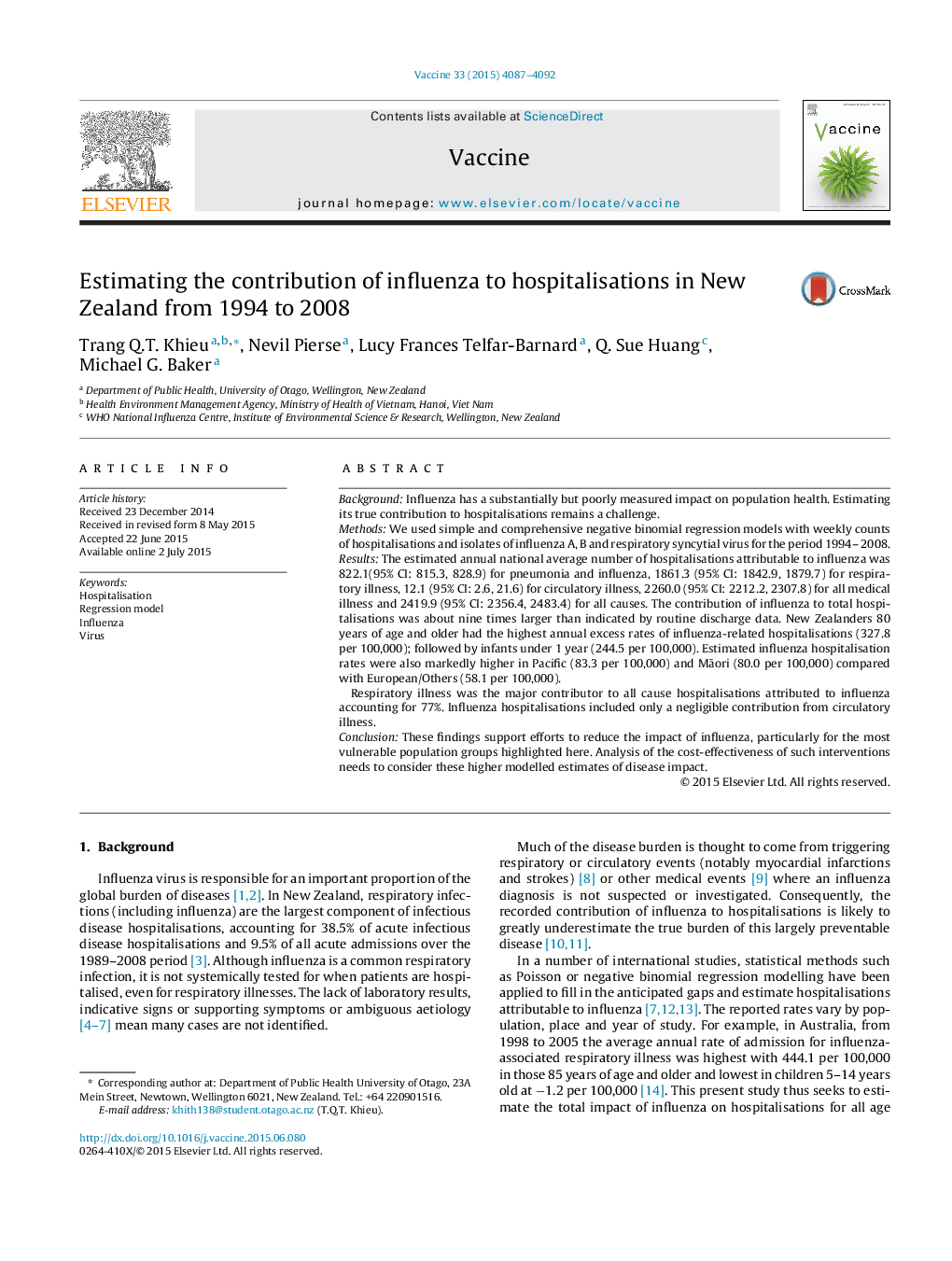| کد مقاله | کد نشریه | سال انتشار | مقاله انگلیسی | نسخه تمام متن |
|---|---|---|---|---|
| 2402215 | 1102703 | 2015 | 6 صفحه PDF | دانلود رایگان |
• A negative regression model was used to estimate the total impact of influenza on hospitalisations for all age and ethnic groups.
• Weekly counts of hospitalisations and isolates of influenza A, B and respiratory syncytial virus for the period 1994–2008 were input parameters for the model.
• Respiratory disease was the major contributor to influenza hospitalisations.
• Findings could provide a useful input into decisions about vaccination policy and would increase the estimated cost-effectiveness of interventions for the most vulnerable groups.
BackgroundInfluenza has a substantially but poorly measured impact on population health. Estimating its true contribution to hospitalisations remains a challenge.MethodsWe used simple and comprehensive negative binomial regression models with weekly counts of hospitalisations and isolates of influenza A, B and respiratory syncytial virus for the period 1994– 2008.ResultsThe estimated annual national average number of hospitalisations attributable to influenza was 822.1(95% CI: 815.3, 828.9) for pneumonia and influenza, 1861.3 (95% CI: 1842.9, 1879.7) for respiratory illness, 12.1 (95% CI: 2.6, 21.6) for circulatory illness, 2260.0 (95% CI: 2212.2, 2307.8) for all medical illness and 2419.9 (95% CI: 2356.4, 2483.4) for all causes. The contribution of influenza to total hospitalisations was about nine times larger than indicated by routine discharge data. New Zealanders 80 years of age and older had the highest annual excess rates of influenza-related hospitalisations (327.8 per 100,000); followed by infants under 1 year (244.5 per 100,000). Estimated influenza hospitalisation rates were also markedly higher in Pacific (83.3 per 100,000) and Māori (80.0 per 100,000) compared with European/Others (58.1 per 100,000).Respiratory illness was the major contributor to all cause hospitalisations attributed to influenza accounting for 77%. Influenza hospitalisations included only a negligible contribution from circulatory illness.ConclusionThese findings support efforts to reduce the impact of influenza, particularly for the most vulnerable population groups highlighted here. Analysis of the cost-effectiveness of such interventions needs to consider these higher modelled estimates of disease impact.
Journal: Vaccine - Volume 33, Issue 33, 7 August 2015, Pages 4087–4092
